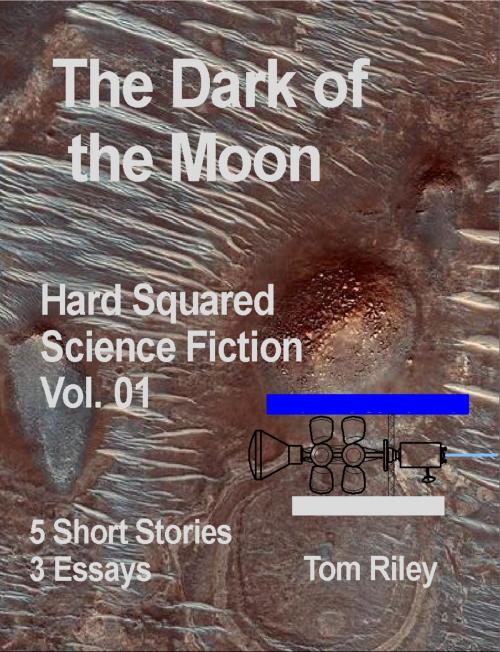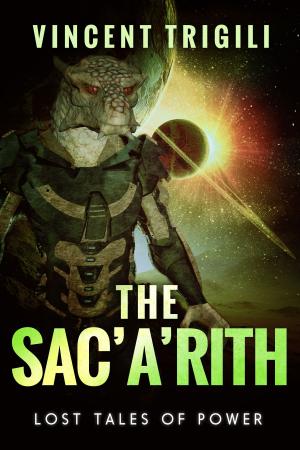The Dark of the Moon
Nonfiction, Science & Nature, Science, Physics, Astrophysics & Space Science, Science Fiction & Fantasy, Science Fiction| Author: | JT Riley | ISBN: | 9781301350025 |
| Publisher: | JT Riley | Publication: | June 22, 2013 |
| Imprint: | Smashwords Edition | Language: | English |
| Author: | JT Riley |
| ISBN: | 9781301350025 |
| Publisher: | JT Riley |
| Publication: | June 22, 2013 |
| Imprint: | Smashwords Edition |
| Language: | English |
The Vision Problem:
To solve the great problems of the 21st century we need vision. Science fiction has historically provided this exact type of vision and thereby supported most of the great technological advances of the 20th century, perhaps most clearly, Apollo to the Moon. Now to address the great problems of the 21st century, like global warming, we will need such vision again. Science fiction stories can provide that vision, but they most powerfully show this effect if they are written for this purpose.
“The Dark of the Moon” is a collection of five hard science fiction short stories and three supporting science essays. It is volume one in a series of e-books called “Hard Squared Science Fiction” that intentionally set out to provide the vision people need to solve the great problems of the 21st century.
The Stories:
The stories in the first volume, “The Dark of the Moon”, are in two series; one supporting space exploration and the other exploring the symbiotic relationship between man and his machines.
The Andromeda Series has two stories in this volume, the title story “The Dark of the Moon” in which a cosmonaut, having worked himself to a state of exhaustion, has an epiphany on why human beings must explore space. The second story in this series, “I Want to Know” is a road trip in which two artificial intelligences, a mother and daughter, must drive an emergency vehicle across Mars to save their human crewmates. Along the way they explore what it means to do space exploration in the 21st century where the physical world action is supported by millions of people back on Earth in a parallel virtual world.
The Silver Series has three stories in this volume starting with “They are Not Coming”. This is a detective story set in the dark film noir style. This series makes the assumption that faster than light travel is not possible but that other civilizations have existed in our galaxy for a very long time and that they now know how to use deep time to overcome the vast distances between the stars. They have time on their side.
The alien cultures in these stories understand that after the human race achieves a sustainable Earth in the 21st century, we will then have the time to talk to the stars. Although a first contact story, this story is mostly about human beings first evolving a symbiotic relationship with their own machines.
The Science:
All these stories are support by technical discussions at the end of each story describing the hard science featured in the story and by three science essays covering: generating buy-in for space exploration, the symbiosis of man and machine, and why we are writing these volumes.
Apollo to the Moon was one of the greatest examples in history of a country buying into a visionary idea and then achieving it. We now know a lot more about the process of buy-in and how it operates in the human mind. Can we use this new information to address the great problems of the 21st century?
Men and machines have much too often been portrayed in a deadly competition, particularly in Sci-Fi movie blockbusters. This seems to come from a deep seated human fear and is the direct consequence of having a master/slave relationship with our machines. If you hold slaves, you fear slave rebellion. This has been true throughout history. The solution fortunately is very simple: Do Not keep slaves!
There is a powerful alternative to the maser/slave relationship that solves this problem it is simply to have a symbiotic relationship. Such relationships are common in nature but have rarely been explored for humans in science fiction. The symbiotic path is clearly a key path for a sustainable Earth and we need to now explore that path with vision.
Please join us in envisioning a great and exciting 21st century.
The Vision Problem:
To solve the great problems of the 21st century we need vision. Science fiction has historically provided this exact type of vision and thereby supported most of the great technological advances of the 20th century, perhaps most clearly, Apollo to the Moon. Now to address the great problems of the 21st century, like global warming, we will need such vision again. Science fiction stories can provide that vision, but they most powerfully show this effect if they are written for this purpose.
“The Dark of the Moon” is a collection of five hard science fiction short stories and three supporting science essays. It is volume one in a series of e-books called “Hard Squared Science Fiction” that intentionally set out to provide the vision people need to solve the great problems of the 21st century.
The Stories:
The stories in the first volume, “The Dark of the Moon”, are in two series; one supporting space exploration and the other exploring the symbiotic relationship between man and his machines.
The Andromeda Series has two stories in this volume, the title story “The Dark of the Moon” in which a cosmonaut, having worked himself to a state of exhaustion, has an epiphany on why human beings must explore space. The second story in this series, “I Want to Know” is a road trip in which two artificial intelligences, a mother and daughter, must drive an emergency vehicle across Mars to save their human crewmates. Along the way they explore what it means to do space exploration in the 21st century where the physical world action is supported by millions of people back on Earth in a parallel virtual world.
The Silver Series has three stories in this volume starting with “They are Not Coming”. This is a detective story set in the dark film noir style. This series makes the assumption that faster than light travel is not possible but that other civilizations have existed in our galaxy for a very long time and that they now know how to use deep time to overcome the vast distances between the stars. They have time on their side.
The alien cultures in these stories understand that after the human race achieves a sustainable Earth in the 21st century, we will then have the time to talk to the stars. Although a first contact story, this story is mostly about human beings first evolving a symbiotic relationship with their own machines.
The Science:
All these stories are support by technical discussions at the end of each story describing the hard science featured in the story and by three science essays covering: generating buy-in for space exploration, the symbiosis of man and machine, and why we are writing these volumes.
Apollo to the Moon was one of the greatest examples in history of a country buying into a visionary idea and then achieving it. We now know a lot more about the process of buy-in and how it operates in the human mind. Can we use this new information to address the great problems of the 21st century?
Men and machines have much too often been portrayed in a deadly competition, particularly in Sci-Fi movie blockbusters. This seems to come from a deep seated human fear and is the direct consequence of having a master/slave relationship with our machines. If you hold slaves, you fear slave rebellion. This has been true throughout history. The solution fortunately is very simple: Do Not keep slaves!
There is a powerful alternative to the maser/slave relationship that solves this problem it is simply to have a symbiotic relationship. Such relationships are common in nature but have rarely been explored for humans in science fiction. The symbiotic path is clearly a key path for a sustainable Earth and we need to now explore that path with vision.
Please join us in envisioning a great and exciting 21st century.















